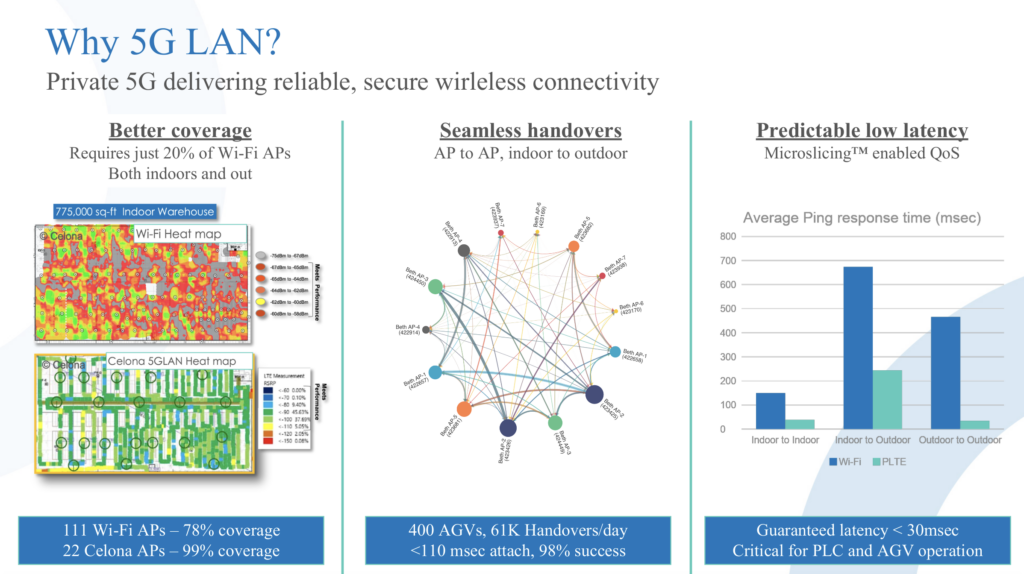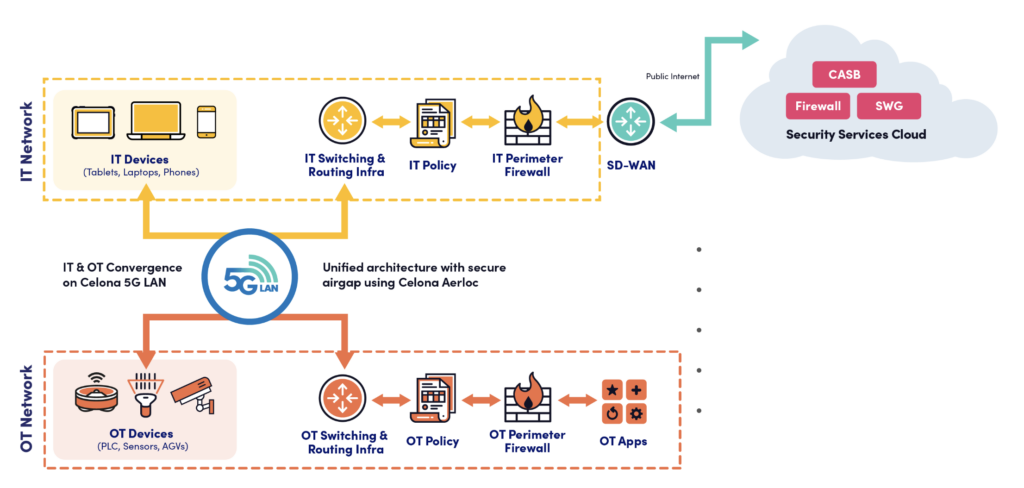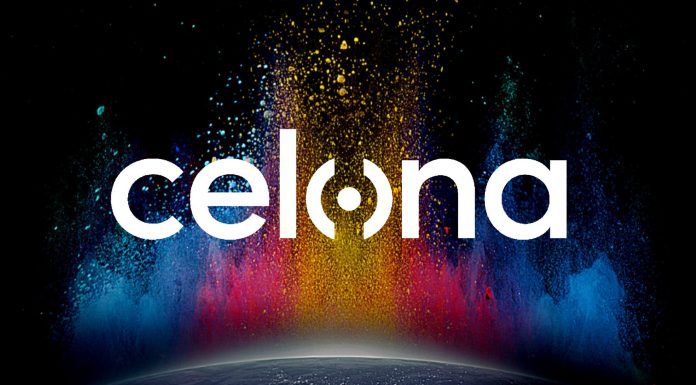Private cellular specialist Celona held court for just 20 minutes at Industrial 5G Forum last month to deliver a handy overview of the whole private 5G spectacle, and to light-up some of its own private 5G pyrotechnics as well. It was the busiest session of the day, with Mehmet Yavuz, its co-founder and chief technology officer, fielding a rush of questions from the audience at the end (see the spill-over Q&A here). “Ours is a local-area network (LAN) solution; we don’t even call it ‘private 5G’. It’s 5G LAN – just like enterprise Wi-Fi is WLAN,” he said, by way of explanation of why California-based Celona, making enterprise 5G work like enterprise Wi-Fi, is different.
“You don’t need to be a 5G expert to operate [our] system,” he added. The implication, quoted before in interviews with Celona in these pages, is that its rivals, notably legacy network vendors, have shrunk-down complex radio systems that require outside help to manage. It is also not a ‘Frankenstein-system’, to repeat a standard line from the firm, insofar as it combines core and radio (RAN) componentry into a single product – so there is no requirement to match with third-party systems, as with other newer entrants in the private 5G space. Yavuz, a veteran of Qualcomm and Ruckus Wireless, teed-up a fistful of seminal Industry 4.0 use cases, newly-served by local-area 5G networks.

These are mostly familiar, now: about easier mobility of machinery and equipment, notably with help from automated guided vehicles (AGVs) and mobile robots (AMRs), used to shift goods inside, outside, and between industrial areas; but also, more futuristically, to support the rapid retooling and reconfiguration of assembly lines. “Wired solutions don’t allow for location-flexibility” he said. “You need that to replace those wires.” And Wi-Fi is not good enough, he said; handover between Wi-Fi access points (APs) is patchy, at best. “If the connection drops, then [AGVs/AMRs] stall, or else operate in a limited mode. Which reduces productivity, significantly.”
Mobility is not the only benefit, of course; superior latency and reliability mean 5G (and 4G/LTE, to an extent) works to connect sensors and machinery via programmable logic controllers (PLCs) in service of bigger Industry 4.0 schemes – where PLCs, the edge-compute nodes found everywhere in industrial venues, provide local orchestration and control of industrial IoT/OT functions in factory operations. The other big win is just plain coverage, he noted, lending itself most clearly to sundry ‘connected worker’ applications – from plain-old smartphones, tablets, and push-to-talk/video comms, to essential video security and newer augmented and virtual reality (AR/VR) applications.
Yavuz said: “Manufacturing companies are turning to private 5G to deliver reliable [and] secure wireless connectivity for use cases like this. There are even more advanced use cases coming. We are now working on humanoids, for example, with an automotive manufacturer.” But this was a brief glimpse of the future and the live focus was on the present – and Yavuz was not hanging about. Why is 5G right, and why is Wi-Fi not? This is the eternal question for enterprises, of course, and the one Yavuz put focus on at Industrial 5G Forum. And the penny dropped, literally perhaps, when he extrapolated the above performance benefits – coverage, mostly, but also mobility and service.

“Private 5G radios cover a much larger area than Wi-Fi APs. Typically, you deploy one 5G radio for every five or six Wi-Fi APs – which reduces the deployment cost. It makes it much simpler and very effective.” He showed a slide with side-by-side coverage heatmaps (see image). “This is an actual example,” he said. “We can cover the whole floor with only 22 5G APs; compare that with 111 Wi-Fi APs. So it’s a five-to-one ratio. And when you go outdoors, into industrial yards and parking lots, the difference is even more dramatic. Frankly, for outdoor coverage, Wi-Fi is often not even an option – due to very high deployment costs for all those radios.”
From there, the presentation was really about the Celona proposition. “Our DNA is about both 5G knowhow [and] enterprise networking,” he said, before breaking-down its offer into its constituent parts: SIMs and eSIMs, manually or remotely configured in sundry industrial devices (“managed like any other IT/OT device”); indoor and outdoor 4G/5G radios, compatible with sundry industrial switches (“plug-and-play, just like Wi-Fi APs”); a management platform, called Celona Orchestrator, enabling configuration and quality/access administration of devices, plus a view of the network itself; and a new IT/OT security wrap, the most novel entry in the developing Celona catalogue.
The new ‘zero-trust’ industrial security architecture, introduced in October, is called Celona Aerloc. New capabilities include unified SIM-based authentication, dynamic and distributed policy enforcement, and IT/OT air-gapping on common 4G/5G infrastructure. The background is that traditional IT security often fails in industrial settings because data is required to be kept on-premise, often siloed between IT/OT functions, and because IoT devices require ‘agentless authentication’. The Aerloc solution combats these issues by “unifying” IT, OT, and 5G without compromising the principles that have tended to keep them apart, and make security complex to administer.

Common SIM authentication for IT/OT devices eliminates the need for device-side IoT software or agents. Aerloc offers native integration via APIs with firewalls, network access control (NAC) systems, and SD-WAN solutions in edge, cloud, and hybrid setups. Distributed policy enforcement works with sundry security assessment tools and orchestration platforms to enable local access at a granular level – “down to the individual device or user”. Celona’s own ‘MicroSlicing’ technology affords a way to air-gap IT and OT traffic on the same 5G network. Yavuz said: “Both IT and OT can be truly segmented, not only physically but logically, [while] still operating in the same 5G LAN.”
And then, short of time, Yavuz broke for questions, which were noisy and numerous – and which are all transcribed and answered here.

